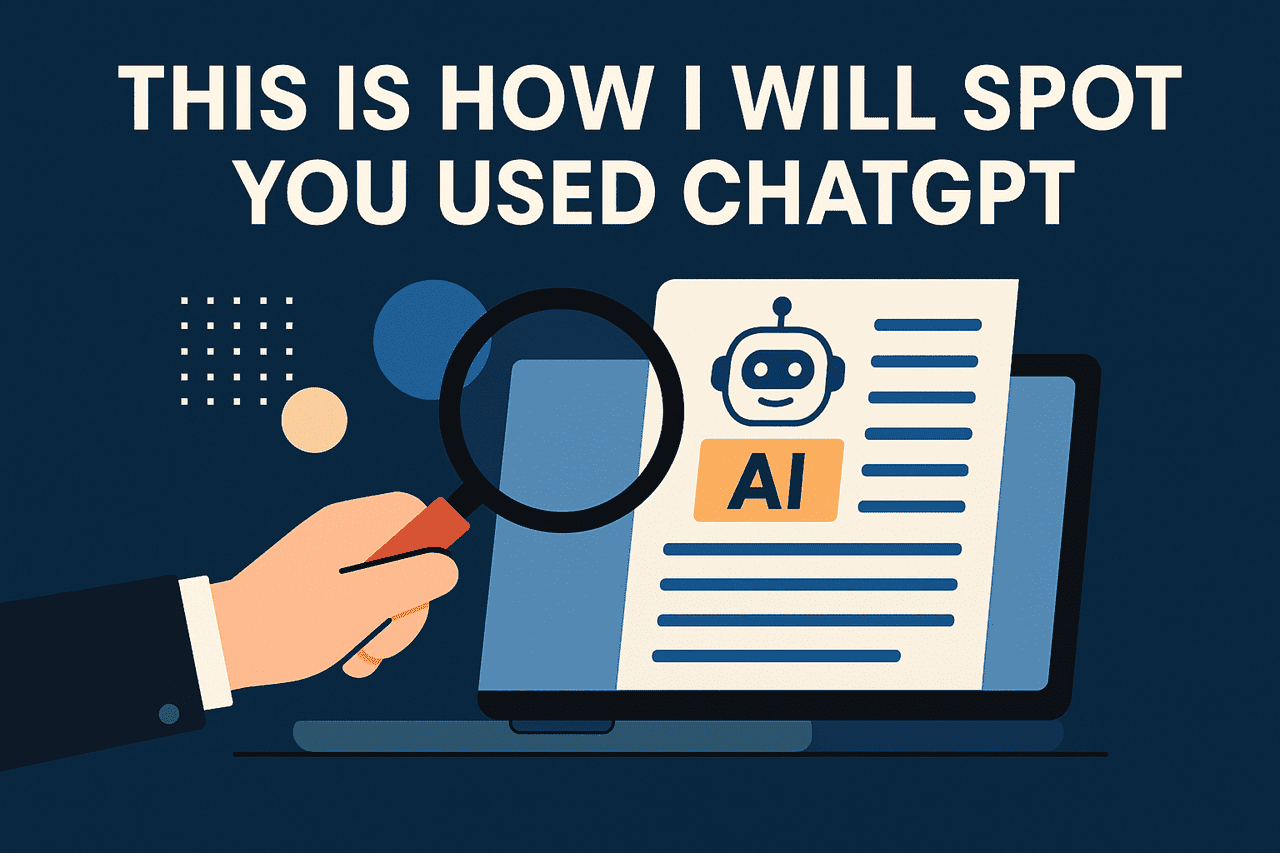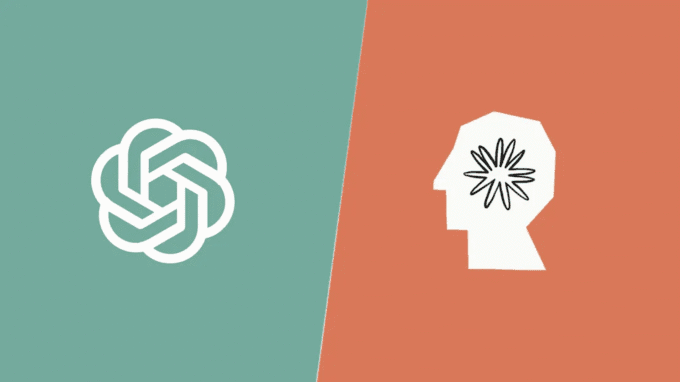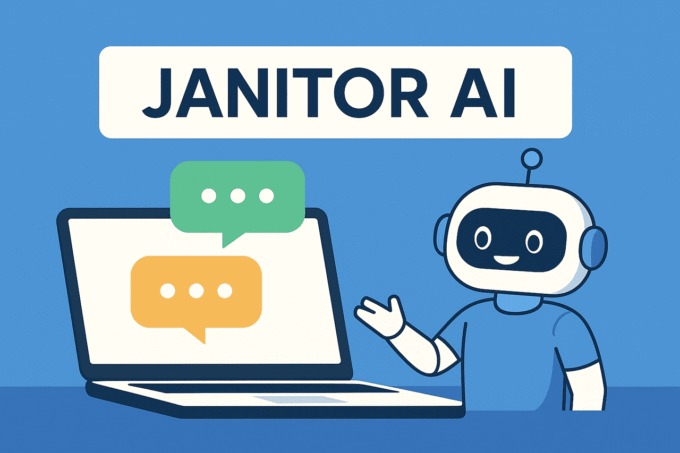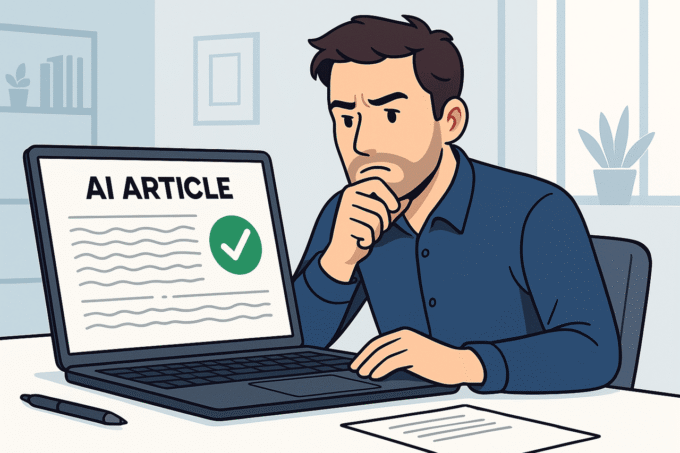If you’re worried about someone figuring out you used ChatGPT, here’s the truth: it’s easier to spot than most people think. This is how I will spot you used ChatGPT, and I’ll break it down in plain language so you understand exactly what teachers, recruiters, editors, and search engines are looking for.
How to Tell if Someone Used ChatGPT
People think AI-generated text is invisible, but it leaves fingerprints. If you want to detect ChatGPT writing, the best place to start is with the patterns that always show up.
The Writing Style Giveaways
ChatGPT writing has a “voice” that feels polished but a little too polished. It’s balanced, structured, and sometimes robotic. Here are the signs:
- Repetitive transitions like “It’s important to note,” “Moreover,” “In addition,” and “Overall.”
- Even tone that avoids strong opinions, slang, or personal details.
- Perfect grammar with almost no mistakes, which actually looks suspicious compared to normal writing.
- Generic phrasing that sounds smart but says very little.
- Lack of lived experience, which makes the text sound flat.
Example: A student essay might say “The Industrial Revolution was a turning point in history that changed many aspects of society” but never go into specific details, personal voice, or historical nuance. That’s a red flag.
Bonus: If Your AI Article Can’t Pass This Simple Test, Don’t Publish It
Tools and Techniques for Spotting AI Writing
The most common way to detect ChatGPT writing is with AI detection tools. These tools measure how predictable the text is, using terms like “burstiness” and “perplexity”. Humans write in messy bursts, AI writes in smoother, more predictable patterns.
Popular tools:
- GPTZero: Free and widely used by teachers.
- Originality.ai: Paid, with high accuracy, especially for SEO content.
- Turnitin: Used in universities, built directly into plagiarism software.
- AI Busted: A newer tool for quick spot checks.
Free vs Paid AI Detection Tools
| Tool | Accuracy | Price | Best Use Case |
|---|---|---|---|
| GPTZero | Moderate | Free | Teachers & casual checks |
| Originality.ai | High | Paid | SEO teams, editors |
| Turnitin | High | Subscription | Universities & schools |
| AI Busted | Low-Moderate | Free | Quick one-off tests |
Limitations: No tool is 100% accurate. Some human writing gets flagged, and some AI slips through. That’s why most people use both software and human judgment.
Human Intuition vs Algorithmic Detection
A teacher who has read dozens of essays from one student knows when something feels off. Recruiters read hundreds of resumes a week, so they notice when one looks too generic. Editors see writing that looks polished but lacks voice.
Algorithms scan for patterns, but humans spot things like:
- Tone mismatch with past work.
- Perfect formatting with zero mistakes.
- Odd phrasing that doesn’t fit context.
That’s why the best detection comes from combining tools with human intuition.
Comparing AI Detection Tools and Strategies
If you are deciding which tool to use, the choice depends on your role.
GPTZero vs Originality.ai vs Turnitin
These three tools are the heavyweights. Here’s how they compare:
- GPTZero is free, easy to use, and great for education. Accuracy is decent but not perfect.
- Originality.ai is built for professionals. It scans bulk content and gives percentage scores. SEO teams love it.
- Turnitin is already used in schools. It combines plagiarism checks with AI detection.
AI Detection Tool Features
| Tool | Accuracy | Cost | Integration | Best For |
|---|---|---|---|---|
| GPTZero | Medium | Free | Standalone | Teachers, individuals |
| Originality.ai | High | $0.01/word | Browser extension, CMS | SEO, editors |
| Turnitin | High | Institutional license | LMS platforms | Universities |
Which AI Detector is Best for Your Use Case
- Educators: Turnitin or GPTZero. Easy integration into grading systems.
- Recruiters: Originality.ai for resumes and cover letters.
- Editors/SEO: Originality.ai works best for bulk scanning.
- Casual Users: GPTZero for free spot checks.
The Future of AI Detection in 2025 and Beyond
Detection tools will keep evolving. AI writers are improving, and detectors must keep up. Expect to see:
- Watermarked AI text: built-in identifiers.
- Search engines flagging AI-heavy sites.
- Stronger LMS policies where every essay gets scanned automatically.
The truth: AI writing will never be impossible to detect. It only gets harder to hide.
Benefits of AI Detection
Why does spotting AI writing matter so much?
Preserving Academic Integrity
Universities want fairness. If one student uses AI and another spends hours writing, that’s not equal. Tools like Turnitin help level the field. Some schools have started banning AI text, while others allow it if cited properly.
Protecting Hiring Processes
Recruiters don’t want generic resumes. AI resumes often sound the same, with vague accomplishments and buzzwords. A resume that says “Proven track record of driving success” without actual data is suspicious. Many recruiters now run resumes through AI checkers.
Safeguarding Content Marketing and SEO
Google does not ban AI content, but it cares about quality. AI text that is generic, keyword-stuffed, or repetitive can tank rankings. SEO teams use AI detectors to make sure content feels human and original.
Bonus: The 11 Best ChatGPT Alternatives
Risks and Limitations of Spotting ChatGPT
Detection is not perfect. There are risks.
False Positives and Inaccuracy
Sometimes human writing gets flagged as AI. This happens with people who write in a simple style or non-native English writers. That can create unfair accusations. Schools and companies need to use tools carefully, not blindly.
Evasion Tactics by AI Users
People who rely on ChatGPT try tricks like:
- Rewriting with synonyms.
- Running text through paraphrasing tools.
- Mixing AI and human edits.
- Prompting ChatGPT to “sound more human.”
These tactics work sometimes, but sharp readers still notice.
Step-by-Step Guide to Spot ChatGPT Writing
Here’s a simple 7-step process.
- Check tone: Is it consistent with past work?
- Look for vague claims: AI often avoids specifics.
- Run detection software: Use GPTZero or Originality.ai.
- Compare past samples: Does the style match?
- Check for missing citations: AI forgets to cite sources.
- Measure readability: AI often writes at one flat level.
- Final human check: Ask if it feels authentic.
Frequently Asked Questions
How to tell if someone used ChatGPT?
Look for repetitive transitions, vague explanations, and overly polished grammar. Run it through a tool like GPTZero for confirmation.
Can Turnitin detect ChatGPT accurately?
Yes, but not perfectly. Turnitin claims around 80% accuracy. It can flag suspicious writing, but false positives and misses do happen.
What are signs of ChatGPT writing style?
Repetitive structure, balanced tone, overuse of words like “moreover” or “in conclusion,” and missing personal stories are strong signs.
Are AI detectors like GPTZero reliable?
They are useful but not 100% accurate. GPTZero is better for essays than resumes. Use tools as a guide, not absolute proof.
Which is better GPTZero or Originality.ai?
GPTZero is free and easy, while Originality.ai is paid but more accurate. For professional use, Originality.ai is usually preferred.
How do professors prove students used ChatGPT?
They compare essays to past work, check for sudden improvement, and use AI detectors. Some ask students to explain their writing in person.
Can Google detect AI written blogs?
Yes, Google can spot patterns in AI writing. It ranks content based on quality and originality, not just whether it’s AI.
How recruiters know if a resume is AI generated?
Recruiters look for generic achievements, buzzwords, and lack of specifics. Many now use detection tools.
What red flags reveal AI generated content?
Perfect grammar, repeated transitions, vague claims, and missing details are common red flags.
How to make ChatGPT text sound more human?
Add personal stories, real examples, and uneven sentence lengths. Break the robotic rhythm with natural quirks.
Conclusion
AI writing is everywhere, but it always leaves clues. Whether it’s a teacher grading essays, a recruiter reading resumes, or Google ranking blogs, people are getting better at telling the difference. Tools like GPTZero and Originality.ai help, but human judgment still matters most. And that’s exactly why this is how I will spot you used ChatGPT.




